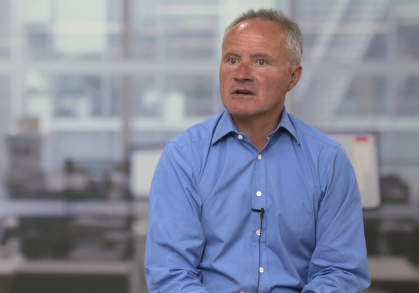In this interview, John Bennett, portfolio manager of Henderson European Absolute Return Fund and Head of the European Equities, explains his view about european equities and the influence of the central banks policies in the stocks markets.
Do European equities offer value?
I’ve always been wary of the value versus growth thing. I think these are convenient labels. Value is in the eye of the beholder. For me, value is about the price you pay for cash flow. What I would say about value is that the old definition of value and growth no longer applies, because this is no ordinary cycle. This has not been an ordinary cycle since the financial crisis. It cannot be an ordinary cycle because of the debt mountain that built up. We are still dealing with the threat of debt deflation – that is really what central bankers are fighting.
In the old days of buying value, you might have looked at cement, banks, steel, cars or aluminium – traditional value sectors. This is not a good idea now, because of deflationary risks, and because of central banks’ response to deflationary risks, namely the QE experiment. You have overcapacity in so many industries that you used to call value. Until we get a change in the inflation dynamic, this probably won’t change.
Are European banks rightly unloved?
Banks have been the poster children of the value trap. Value is never in a ratio. Fund managers have become inured to the many calls from strategists on the sell side who have suggested that it is time to buy the banks. It has been a spectacularly wrong since 2008 because the banking model has been severely disrupted, if not broken, by QE.
What are your post-Brexit concerns for Europe?
I have been less worried about the FTSE 100 and the UK economy than the European periphery in the immediate aftermath of Brexit; because of course Britain flexed its currency, devaluing sterling significantly. I worried about the effects of that more on the European periphery, an already fairly uncompetitive area, where the euro has arguably been too strong since it was launched.
The euro in my view has been too weak for Germany and too strong for everyone else. I thought it was wrong that people were panicking on UK house builders, for example. I haven’t said ‘panic about the periphery’, rather ‘worry about the periphery’. I think it’s a patient that is still healing. Recent GDP numbers from Italy hasn’t been that good, which threatens Italian Prime Minster Matteo Renzi in the upcoming referendum – yet another noisy political event in Europe. I doubt I’ll ever stop worrying about the economies in the periphery.
How is the healthcare sector performing?
Pharma hasn’t really participated in the defensives rally. At best pharma has been dull; in some cases worse than dull. I went into 2016 thinking that this was a year for stocks, not markets. I was trying to say I’m not convinced that this would be an ‘up’ year for market indices. So far, unless you have been based in sterling, you haven’t had an up year in European equities. I would extend that to say even stocks not sectors (from stocks not markets). So, we have nuanced our pharmaceuticals view to say it is not just so much about buying the whole sector. You are now seeing clear stock dispersion within pharma, with pricing pressure in some clinical areas in the US.
Look at the news from Sanofi on its diabetes insulin product. And look at the news from Novo Nordisk. Yes; pricing is beginning to be a problem in the US – a headwind for some pharmaceutical companies, but not all. Where I take an issue with the ‘one size fits all’ approach was that, if you have innovative medicine meeting unmet clinical needs, you will have pricing power. This is why our names are big names in pharma like Roche and Novartis, and also Fresenius in healthcare. I think stock dispersion is back, even within sectors.

